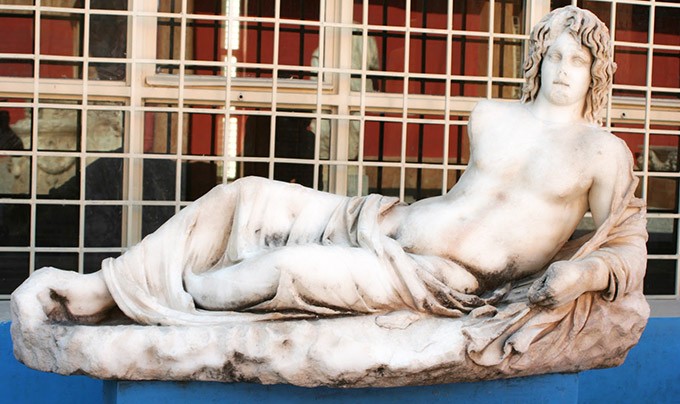
Aphrodisias, one of Turkey’s most well-preserved ancient cities, is renowned not only for its historical significance, as noted in the comprehensive Byzantine encyclopedia, the Suda, but also for its rich cultural heritage. Named after Aphrodite, the Greek goddess of love, the city was home to a revered sanctuary dedicated to her. Its close proximity to a marble quarry fostered the development of a celebrated sculpture school, known for the numerous significant sculptures discovered there.
The city’s origins trace back to prehistoric times, with evidence of habitation dating to the 5th or 6th millennium BC. However, it wasn’t until the 2nd century BC that Aphrodisias began to emerge as a flourishing city. It reached its zenith in the late 1st century BC under the patronage of Roman Emperor Augustus, marking a period of unparalleled prosperity which continued into the early centuries AD. This era saw Aphrodisias become a nexus for paganism and Judaism, buoyed by its famous sculpture school.
The 4th century brought challenges, as an earthquake altered the city’s water table, making parts susceptible to flooding. Despite efforts to mitigate these effects, Aphrodisias could not reclaim its former glory, particularly amid the broader decline of the Roman world in the 6th and 7th centuries, leading to its abandonment in the 14th century.
Among Aphrodisias’ architectural marvels are:
1. Temple of Aphrodite : Originating in earlier times but predominantly built in the 1st century BC, this temple underwent numerous phases before its completion in the 2nd century AD. Later, it was transformed into a Christian basilica, highlighting the city’s evolving religious landscape.
2. Aphrodisian Sculptures: The local marble quarry enabled the production of exquisite sculptures, with the city’s museum now housing both complete and partial works that showcase the skill of Aphrodisian sculptors.
3. Monumental Gateway (Tetraphylon): This grand entrance, marking the way to the Temple of Aphrodite, symbolizes the city’s spiritual and cultural heart.
4. Bouleuterion: Serving as a council house with seating for 1,750, this structure exemplifies the city’s architectural sophistication and civic organization.
5. Stadium: Renowned as the Mediterranean’s best-preserved and largest stadium, it highlights Aphrodisias’ significance in the ancient sporting world.
6. Odeon: This concert hall, with its semicircular seating and intricate mosaics, underscores the city’s rich cultural life.
7. Baths of Hadrian: Reflecting the luxury of Roman bathing culture, these baths feature advanced engineering and artistic design.
8. Theater: Capable of seating 8,000 spectators, the theater hosted a variety of performances and events, illustrating the city’s vibrant public entertainment scene.
9. Portico of Tiberius: Named for the emperor under whose reign its construction began, this portico is notable for its dedicatory inscriptions and central pool.
10. Sebasteion: A grand temple complex dedicated to Aphrodite and the Julio-Claudian emperors, representing one of the site’s most significant archaeological finds.
11. Agora: A bustling public square and market, it was a focal point for musical, literary, and civic activities.
Aphrodisias remains a captivating site, offering a window into the past where art, culture, and history intertwine. Its meticulously preserved structures invite exploration and admiration, serving as a lasting tribute to the ancient world’s complexity and creativity. Visiting Aphrodisias offers a profound journey through history, revealing the enduring legacy of this unique city dedicated to the goddess of love.



